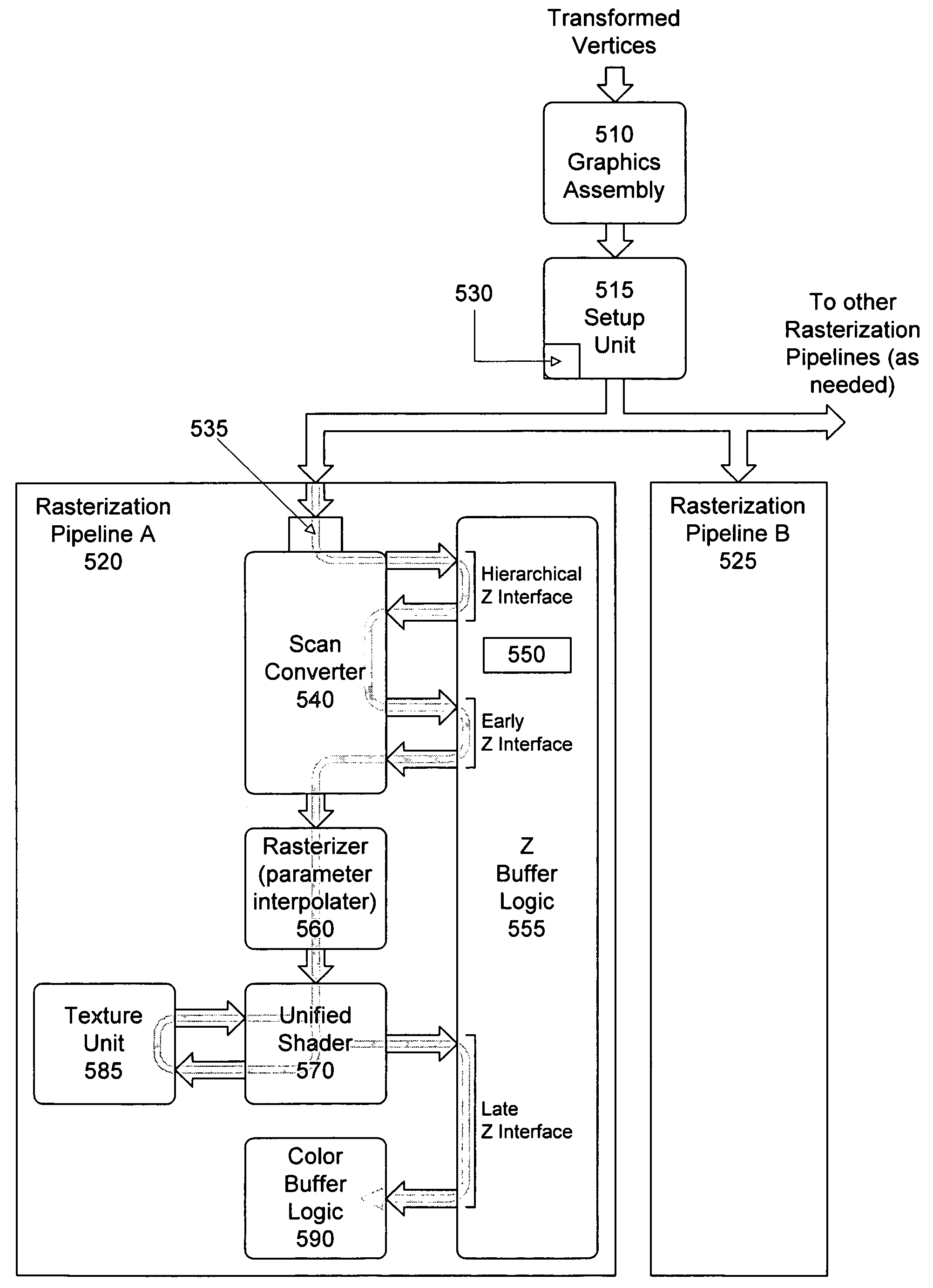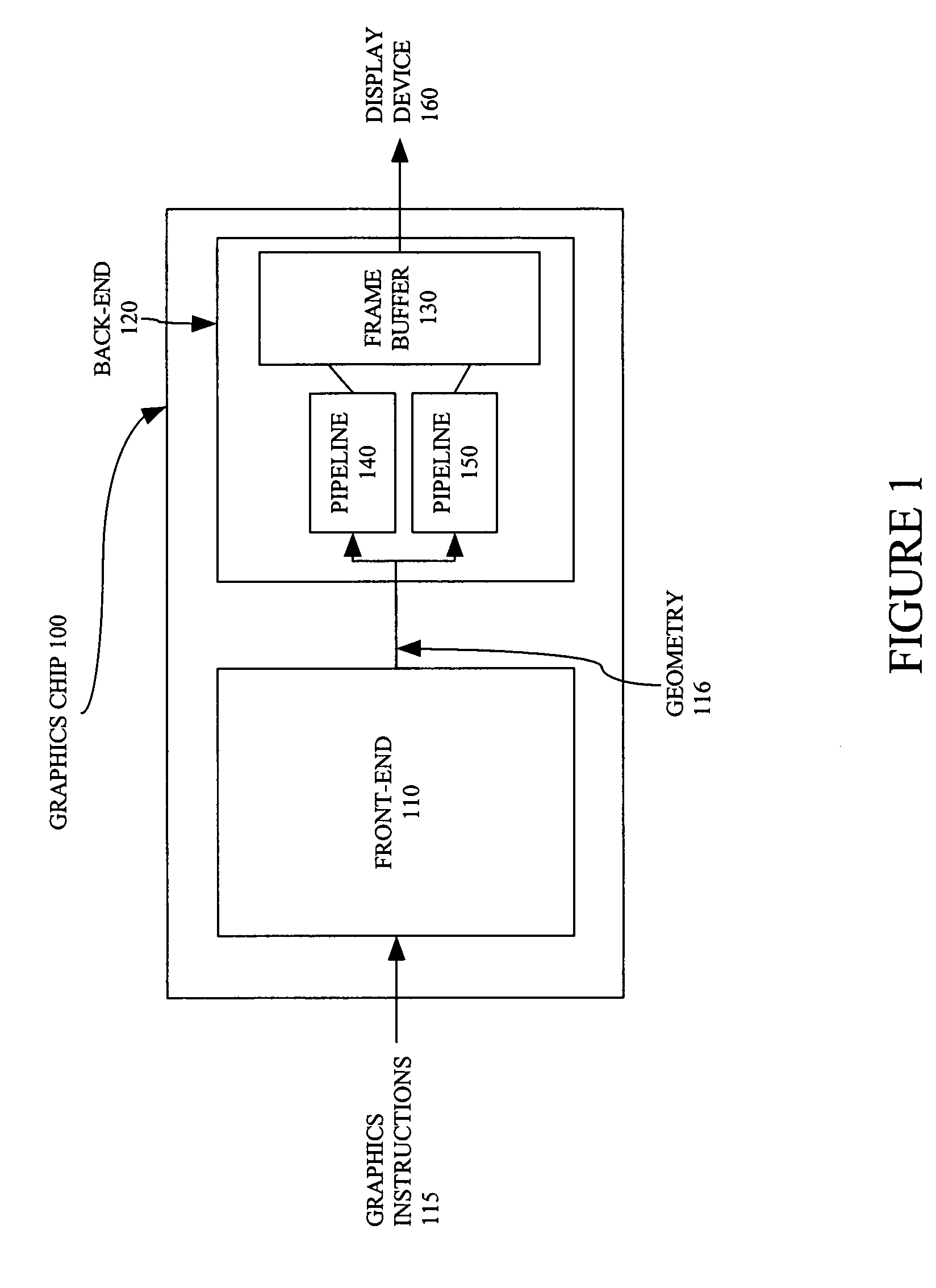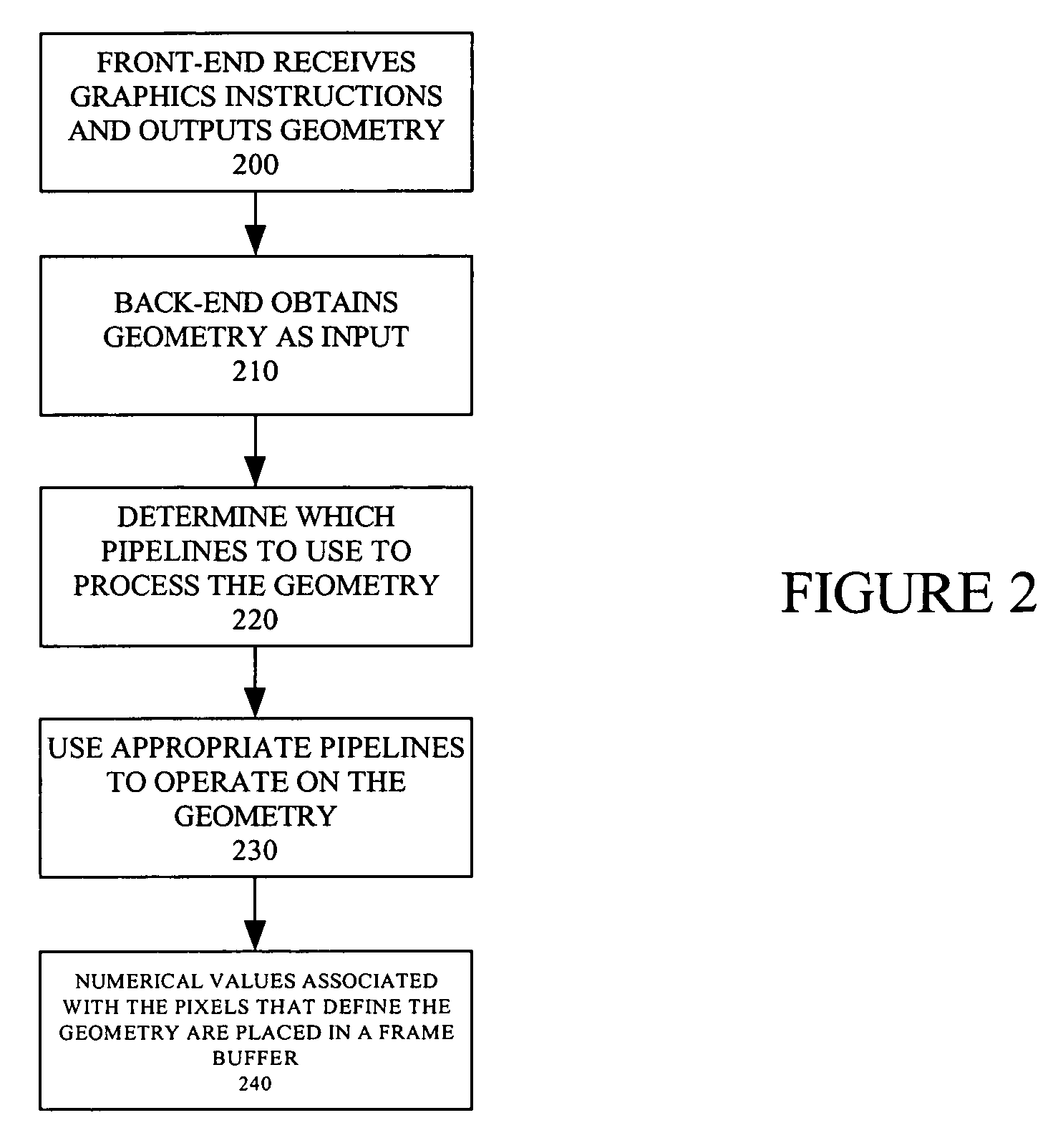Parallel pipeline graphics system
a parallel pipeline and graphics system technology, applied in the field of parallel pipeline graphics system, can solve the problems of moving to a 256 bit system, memory bandwidth becomes a limitation on performance, and the back-end of the graphics chip is currently inadequa
- Summary
- Abstract
- Description
- Claims
- Application Information
AI Technical Summary
Benefits of technology
Problems solved by technology
Method used
Image
Examples
Embodiment Construction
[0035]The invention relates to a parallel pipeline graphics system. In the following description, numerous specific details are set forth to provide a more thorough description of embodiments of the invention. It will be apparent, however, to one skilled in the art, that the invention may be practiced without these specific details. In other instances, well known features have not been described in detail so as not to obscure the invention.
[0036]Parallel Array Graphics System
[0037]One embodiment of the present invention is shown in the block diagram of FIG. 1. Graphics processing chip 100 comprises a front-end 110 and a back end 120. The front-end 110 receives graphics instructions 115 as input and generates geometry 116 as output. The back-end 120 is used to process the geometry 116 it receives as input. For instance, the back-end 120 might operate by texturing, shading, scanning, coloring, or otherwise preparing a pixel for final output.
[0038]When the geometry 116 has been fully p...
PUM
 Login to View More
Login to View More Abstract
Description
Claims
Application Information
 Login to View More
Login to View More - R&D
- Intellectual Property
- Life Sciences
- Materials
- Tech Scout
- Unparalleled Data Quality
- Higher Quality Content
- 60% Fewer Hallucinations
Browse by: Latest US Patents, China's latest patents, Technical Efficacy Thesaurus, Application Domain, Technology Topic, Popular Technical Reports.
© 2025 PatSnap. All rights reserved.Legal|Privacy policy|Modern Slavery Act Transparency Statement|Sitemap|About US| Contact US: help@patsnap.com



